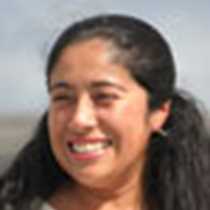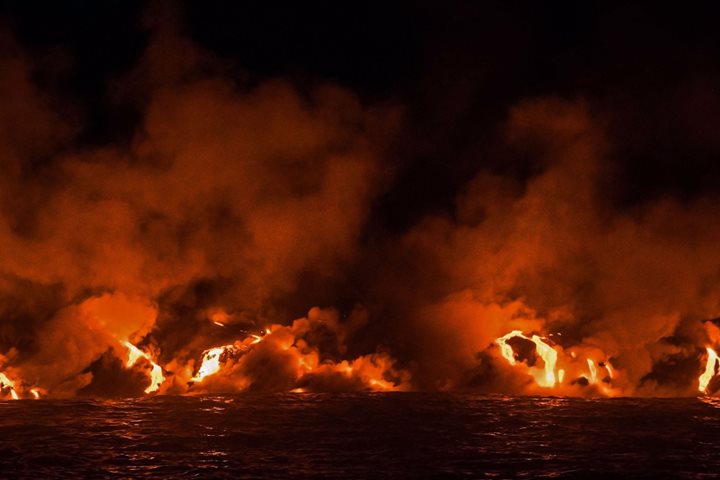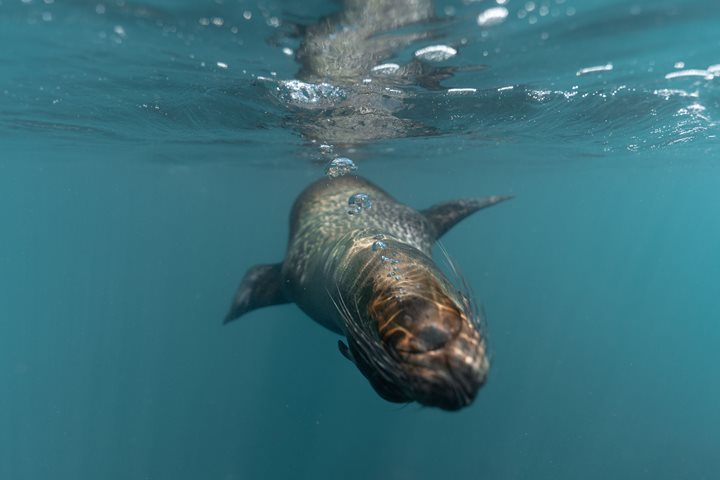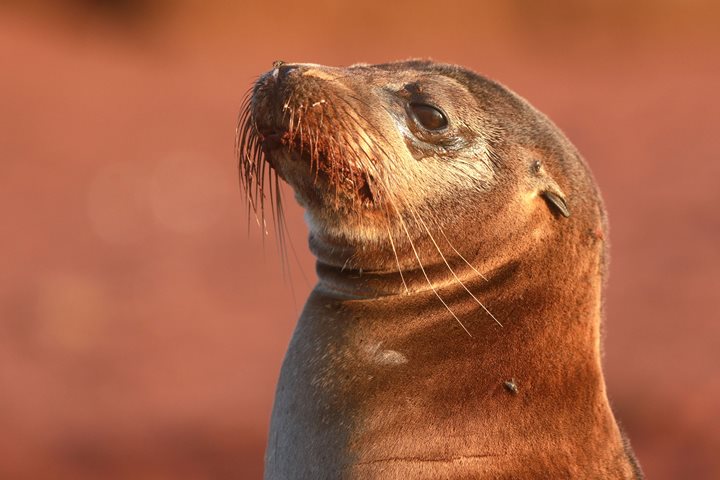An amazing expedition day started with an early hike at Espumilla beach, Santiago Island. This is one of the few places on Santiago that still matches Charles Darwin description of his voyage to the Galapagos Archipelago in 1835. We got to see blue footed boobies and brown Pelicans diving, American Oystercatchers and Darwin finches. An alternative to the walk was a great Kayak opportunity! Then the National Geographic Islander was repositioned towards Buccaneers’ Cove, where our guests enjoyed a great snorkeling and an incredible Zodiac ride along the coast. The landscape here is spectacular and the underwater world this morning was at its best, with white-tipped reef sharks, rays, lots of colorful fish, Octopus and a red spiny lobster. The afternoon was spent at Puerto Egas, here we were delighted with the excellent weather conditions, we became explorers along the coastal area, observing and discovering the intertidal zone, filled with colorful Sally light foot crabs, several Galapagos sea lions and Galapagos fur seals. Today it was a great day, full of experiences and memories. Tomorrow the adventure continues!
- Daily Expedition Reports
- 15 Jun 2017
Santiago Island, 6/15/2017, National Geographic Islander
- Aboard the National Geographic Islander
- Galápagos
Vanessa Gallo, Naturalist
Vanessa Gallo’s grandparents arrived in the Galápagos Islands in 1936, making her the third generation of her family to live and work in this magical archipelago. She left the islands for the capital city of Quito for high school, where she discovere...
Read MoreShare Report
Related Reports
11/23/2022
Read
National Geographic Islander II
Isabela and Fernandina
Our day began with the chance to point out a lot of interesting geological features as we enjoyed Zodiac tours along a massive flank of Ecuador Volcano on Punta Vicente Roca. In the afternoon, we took a sunny walk on Punta Espinoza on Fernandina Island. We spotted many iguanas, and a bunch of sea lions hanging around, too.
11/22/2022
Read
National Geographic Islander II
North Seymour & Rabida Islands
Relatively small and low compared to neighboring Santa Cruz, North Seymour is located to the north of Baltra. The island is dry with predominantly low shrubs, like prickly pear cacti. The incense trees are bare during the dry season. Seabirds like frigatebirds and blue-footed boobies nest on the island, and sea lions rest on the sand when they are not fishing. Land and marine iguanas also live here. Rabida is in the middle of the archipelago and has a striking red sand beach. We observed a small colony of sea lions of all ages resting or nursing. Behind the beach, American flamingos nest in a brackish lagoon. This island is full of contrasts and wildlife that we enjoyed observing during this day of expedition.







